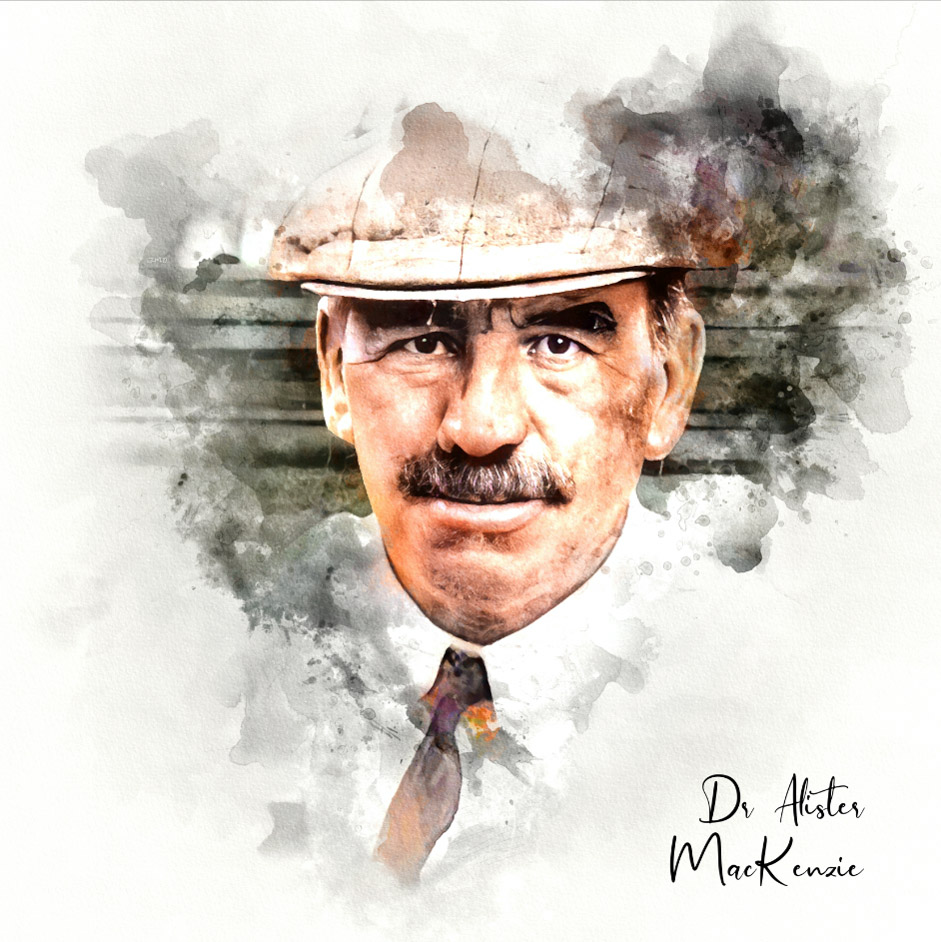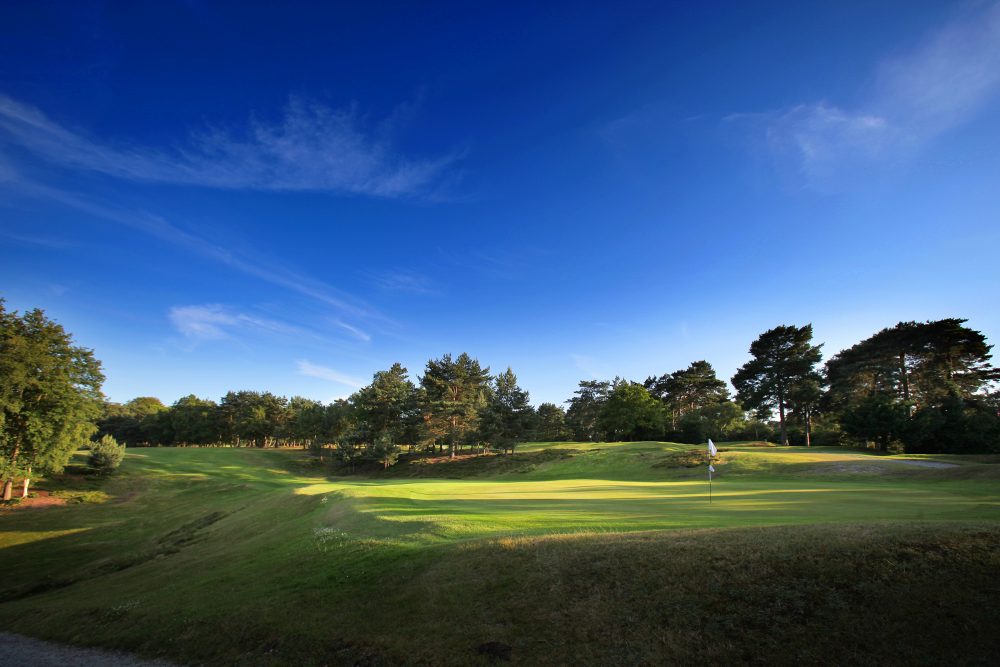The Addington Golf Club

Overview
Architectural Highlights
- Mounding around green complexes
- Bunkers favour right-hand side of green and short right
- Bridges in the spirit of G.C. Thomas' Bel-Air
- Forced carries reminiscent of Pine Valley
- Tactical use of Par 3’s to gain elevation on 1 & 3
- Shoehorned Par 3's expertly used to link holes
- 6 Par 3’s – 3 long and 3 short
- 3-5-3 opening sequence
- Variety within similar holes. Eg. 2,4 & 5. / 6, 8 & 9
Tom Doak recommends golf architecture students pay special attention to the routing. It is a stern test with bags of curiosity and quirkiness.
In 1934, it was reported that during the construction of the course there were over 600 labourers on site. (Dundee Evening Standard 28 June 1934)
Golf Course Review
The Addington Golf Club is a golf club that has recently moved into the Top 100 in the UK & Ireland rankings. We believe it won't be long until it re-enters the World Top 100 and joins the likes of St George's Hill, Sunningdale Old and New, Walton Heath and Swinley Forest as London based clubs that count amongst the best in the world.
Admittedly, John Frederick Abercromby (Aber) wasn’t prolific, but he was admired and lauded by his contemporaries as one of the golden ages best. Under Moria Forbes chairmanship from 1964 to 2002, the golf course was allowed to return to nature. What is left is a rare Abercromby design that remains virtually intact.
The site itself is gravel. Inches below the fairways are the small stones which are both a blessing and a curse. The Addington Golf Club drains exceptionally well, but during periods of dryer weather the turf quality suffers. The club has invested in irrigation after successful testing on a few carefully chosen green surrounds and fairways. Also, the club has embraced the thinning of the trees, overgrowth and ornamental plantings found throughout. The results? Spectacular.
The Addington Golf Club History
The Addington Golf Club showcases precisely why. Built-in 1913/14, The Addington Golf Club was eventually opened in 1919. The Addington became his home base until his death in 1935. In 1913, it was noted the putting greens were to be less lively than Coombe Hill with strong carries from the tees. Due to WW1, construction had halted and JF Abercromby himself remarked the course was "at present practically a farm" in 1916. Following WW1 in 1919, it would be the duo of JF Abercromby and Artur Croome rather than Harry Colt who would lay out the course we know today. Upon opening the course measured 6295 yards and featured just 25 artificial bunkers.
The Front Nine
The opening, short, uphill par three will throw some who expect a gentle Par 4 to introduce one to the course. The right to left sloping, two-tiered green is not an easy two-putt for par. If you don’t find the green, you will feel pretty silly walking off with an opening bogey or worse on such a short, 155-yard hole to start.
The second is a par 5 with a subtle strategy. Due to its length, most will play it as a three-shot hole. Each shot needs to be placed in the appropriate location to have a view of the next target area due to the large ridges running diagonally across the fairway.
The third, 210 yards and uphill, is the second par 3 in the opening three holes. The green will accept a running shot to the high-left side, avoiding bunkers on the right-hand side of the green. The Abercromby, front-right, trademark bunker is first encountered on this hole. Aber used bunkers sparingly but seemed to place them in this location repeatedly. Evidence of this is seen not only on the 3rd but also the 5th, 6th, 10th and 18th.
The fourth and fifth play similarly to the second but the monotony of three parallel holes are broken up by the par-three third. Imperceptibly, you find yourself near the high side of the course just a few hundred yards from the clubhouse and almost a third done. Astutely, Ran Morrisett explains the clever use of the one-shot holes is to gain elevation over the side hill terrain in the first five holes. One and Three both are noticeably uphill following by holes laid out over the sidehill in parallel.
Shifting into another gear, Six is a great, two-shot dogleg left. A 200-yard shot to the left-hand side will leave you just over 100 yards to a very gettable pin. Flare it out slightly to the right, and you have 120 yards over the Wodehouse bunker. Described by P.G. Wodehouse as a “formidable pit”, the bunker is accessed by a staircase. A bridge over the ravine allows your opponent to watch your calamity from box seats, adding insult to the proverbial injury.
Suitably warmed up, the next few holes could comfortably fit on any links routed through towering dunes and feel right at home. The best bit? You’re not only inland, but there are city views of Canary Wharf and the Shard in central London. At this point, Aber shifts gears.
The Seventh is another short par 3, the third in the first seven holes. There is no safe option but to fly the green. The green is longer than it appears due to the right to left hillside obscuring the right, rear portion of the green. Initially, there were three bunkers on the right, an extravagance for Aber, known for his judicious use of bunkers. Interestingly, at the Addington Golf Club, four of the six par three holes originally had three bunkers each!
The second dogleg left, par 4 in three holes it is entirely different from the previous. A completely blind tee shot up and over an imposing hillside. Over the crest of the hill is an impressive second shot slightly downhill to a green perched on the spine of a hogs-back fairway. Any ball left, or right is kicked into the ravines that tumble away from either side of the fairway.
The next hole is the third right to left dogleg in 4 holes but again bears no likeness to the previous two. Playing over two ravines to safe zones accessed by bridges, it is the Bel-Air CC of London. Position, not distance, is rewarded. The psychological battle, not so much the carry, is the test here.
The Back Nine
The inward nine begins with a 390-yard par 4. A back tee has been added, but the “Aber Tee” to the left of the forward tees make this a more exciting hole. The risk is finding the familiar front-right bunker with an aggressive drive that is ever so slightly off the mark and a unique addition of variety at The Addington Golf Club.
Another par 3 of only 140 yards is next. It is reminiscent of the 7th at Pebble Beach. At first glance, you would never see how a hole could fit here. Abercromby’s genius par 3’s again at work! Three bunkers were here originally.
The Addington’s most controversial hole is next. Riled by the apparent ‘unfairness’, a great drive doesn’t always result in a level stance or a good lie. A blind tee shot to a four-step, stair-cased fairway covered in heather is as unique as it sounds. A 225-yard drive will get you to the edge of the top tier. A longer shot over a chasm of rugged lumps and bumps is required next to find the green in two. Most lay up to the bottom of the hill and face a near-blind, uphill third. Called the ‘fast lane’ by the members, longer hitters will often find themselves at the bottom of the stair-cased fairway by hugging the trees to the right off the tee. This hole, more than any other, would benefit from tree removal to open up the left side. Of note, the fairway in 1945 also extended further right beyond the current cart path!
The fifth par 3 is next, and it is also the second in 3 holes. It measures 230 yards and again is all carry. Even today, it strikes fear into even the most proficient. Imagine playing it with a Haskell and hickories! Longhurst waxed lyrical about the hole proclaiming that except for the 5th at Pine Valley, it is the greatest one-shot hole in inland golf. Accented by a bridge over a ravine, this little corner of quiet solitude in the middle of London is a special place indeed!
The fourteenth is a subtle par 4 with a single bunker guarding a green which runs away from you. On the tee, you see the city centre skyline and the Shard.
Back up the hill on the 15th, the fairway bunker is not in play off the tee. The challenge here is the turbulent green of uncharacteristic slopes and undulations.
The 16th is a brilliant hole. From an elevated tee, you can see both central London and Canary Wharf. Played wide right, a solid drive may carom through the fairway, becoming a potential card wrecker. Played correctly, finesse is rewarded rather than power. Using the right to left slope, gravity and natural contours draw the ball to the bottom of the fairway. A hybrid or long iron may be all one needs. Initially, there was a bunker on the left-hand side of the fairway near the ideal spot. The silent witness can still be easily found. From this point, you may well have over 200 yards left to the green. However, learning the lesson from the drive, the green can be reached by using the backside of the second ridge which runs about 50 yards in front of the green. Even if you don’t run on, you are left with only a simple pitch to a bunkerless green precariously perched on a ledge. As well, the fairway would have been much broader with the green accessible from the right side of the fairway after a well-positioned tee shot. To get home in two would require a heroic carry over the deep gully on the greens right. One can only hope for fewer trees, more heather, wider fairways and a restored Abercromby bunker soon.
The sixth and final par 3 is a stout 195-yard hole. Two bunkers are found on the left and one in the traditional spot on the right. Visually deceptive, there is near enough 40 yards from the back edge of the right bunker to the front edge of the green. Playing 90 degrees over the ravine which runs parallel to the 16th green, it is a stunning sixth and final one-shot hole.
Lacking striking topography the closing hole has a well-positioned bunker on the left-hand side that will keep your attention off the tee. The last approach shot is to a plateau green with the familiar mounding, and deep front left bunker. The closing three holes have alternatively been played with One as Sixteen, Five as Seventeen and Four as Eighteen. This configuration makes the Second the First, the Third the Second and the Sixth the third.
The Addington Golf Club Summary
Potential is one word that springs to mind when contemplating The Addington Golf Club. It has bags of character, variety, quirkiness, and personality. Scary, as it already ranks as one of the best of Britain. The rambunctious nature of the terrain is usually reserved for wild, dunes land seaside. Here you are minutes from central London with access to an abundance of corporate opportunities. However, corporate days mean carts, and carts mean cart paths. For the purest, some of the cart paths are not entirely sympathetic to the surrounds.
Nevertheless, The Addington Golf Club is a must-play and entirely walkable even if carrying. Go ahead and book a tee time at this top 100 course. Amongst the mature pine and birch trees, there is a feeling of intimacy in the centre of London. This Harry Colt, John Frederick Abercromby, Arthur Croome golf course design is nothing less than spectacular.
What’s even more striking is The Addington New was considered the better of the two courses... but that story we can save for another day.
The Addington Golf Club Reviews
Enjoy Richard Pennell's accomplished write-up of The Addington GC
Read Golf Club Atlas' review of The Addington Golf Club.
Take Sean Arble's tour of The Addington Golf Club.
Study Jaeger Kovich's analysis of the 12th hole.
The Addington Golf Club Photography
Purchase Kevin Murray's The Addington Golf Club photography.

The Addington Golf Club - Videos

Featured Architect: MacKenzie, Alister
As taken from his book, Golf Architecture, Alister MacKenzie felt the following were essential: The course, where possible, should be arranged in two loops of nine holes. There should be a large proportion of good two-shot holes and at least four one-shot holes. There should be little walking between...








